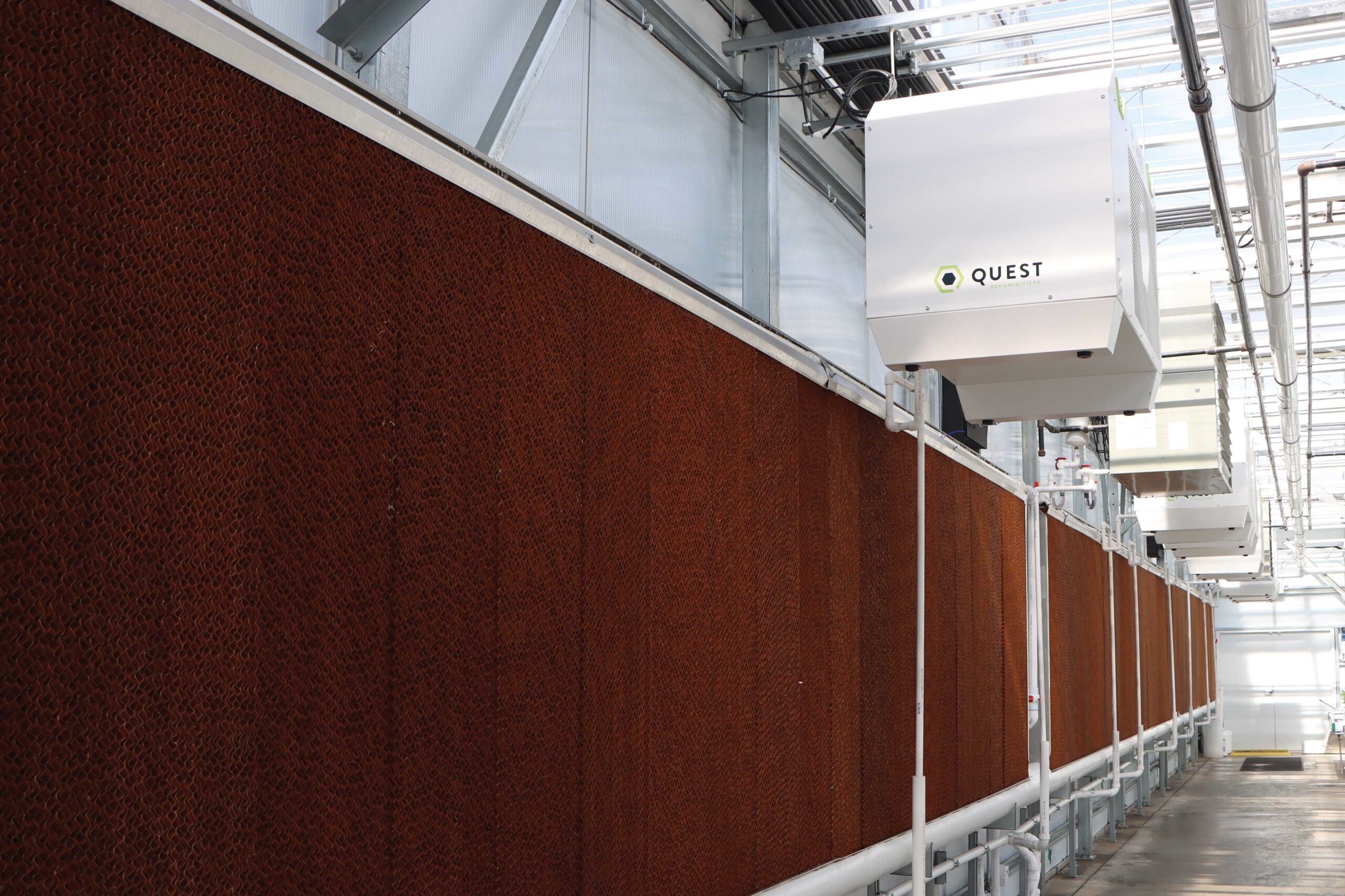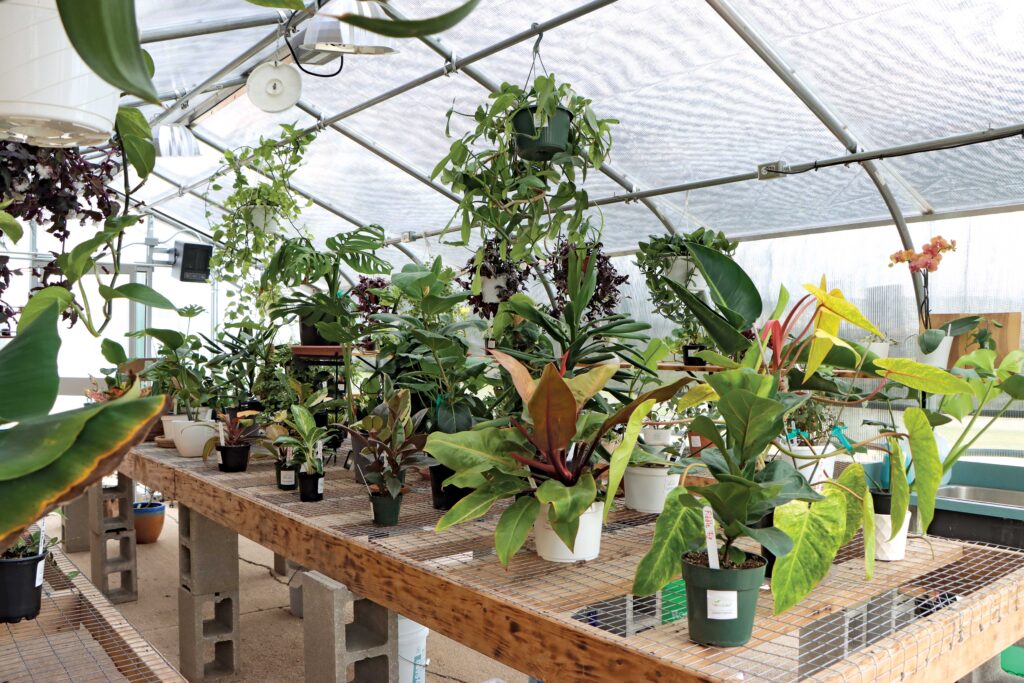Greenhouse Humidification: How To Maintain Proper Humidity Levels In Your Structure
For commercial growers, greenhouses offer a protected space where plants can be produced at scale, while also being shielded from the elements. Still, within these seemingly controlled environments, a delicate balancing act is constantly at play.
Humidity, often overlooked, plays a pivotal role in shaping the success of greenhouse production. To achieve and maintain ideal humidity levels, it’s important that growers recognize the relationship between several key factors, including temperature, relative humidity and dew point.
By mastering these principles, growers can create an environment that minimizes disease risks, optimizes plant growth and yields greater harvests. This blog will help operations gain a better understanding of greenhouse humidification as whole, so they can monitor and fine-tune growing conditions year-round.
THE IMPORTANCE OF HUMIDITY CONTROL
Humidity affects how plants function, influencing transpiration, nutrient uptake and overall growth. When humidity levels are too high, excess moisture can foster the development of fungal diseases, like powdery mildew and botrytis blight.
These diseases can quickly spread through a greenhouse, damaging plants and reducing yields. On the other hand, low humidity can dehydrate plants, which hinders their growth and also leads to decreased yields.
To understand greenhouse humidification, growers need to consider relative humidity (RH). This reflects the amount of water vapor present in the air compared to its maximum holding capacity at a given temperature. For example, 80% RH at 80°F signifies that the air contains 80% of the maximum moisture it can hold at that temperature.

The relationship between temperature and humidity is dynamic, as warm air holds more moisture than cold air. When temperatures increase, relative humidity decreases, even if the absolute amount of moisture remains constant.
Another important concept is dew point. This refers to the temperature at which condensation occurs. When the temperature of a surface, like a plant leaf, drops below the dew point, water vapor in the air condenses on that surface. This condensation can create a favorable environment for disease development, especially fungal diseases.
Sign Up Now To Learn More
RECOGNIZING ISSUES IN GREENHOUSE HUMIDIFICATION
While different tools, like a hygrometer, provide precise humidity readings, there are also visual cues that can alert growers to humidity imbalances. Some signs of excessive humidity include browning or yellowing of plant leaves, a muggy, heavy feeling in the air, persistent standing water in plant trays and condensation on greenhouse surfaces.
Conversely, signs of insufficient humidity include dry roots and growing media, wilting or drying leaves and drooping plants, even after watering. Growers should keep in mind that seasonal variations in rainfall and temperature can also impact humidity levels, requiring them to make adjustments to their greenhouse humidification strategy.
In general, an ideal humidity level for most greenhouse plants is approximately 80% RH at 80°F. However, this may not always be the case. Certain plant types, like tropical plants, may prefer higher humidity environments, while succulents and cacti thrive in lower humidity.

It’s important to remember that temperature and humidity are interconnected, and maintaining a consistent temperature range between 64°F and 75°F is equally important for plant health.
OPTIMIZING GREENHOUSE HUMIDIFICATION
Reducing Greenhouse Humidity
Reducing humidity is often the primary focus in greenhouse management. Excess moisture can lead to a host of problems, and implementing effective control methods is crucial.
Dehumidifiers offer a highly effective method for removing excess moisture from the air. These ventless systems operate as closed loops, conserving energy and making them ideal for use during colder months.
Dehumidifiers can be categorized into two main types: mechanical dehumidifiers, which rely on a refrigeration cycle to condense moisture from the air, and chemical dehumidifiers, which utilize desiccants to absorb moisture. Desiccants are materials that chemically absorb water vapor, providing a quick and efficient solution for humidity control. However, desiccants can be expensive and may not always be sufficient for larger greenhouses.
One of the simplest and most cost-effective methods for growers is to avoid overwatering, especially during the evening when temperatures drop. Using drip irrigation systems or soaker hoses delivers water directly to plant roots, minimizing evaporation and surface moisture. Additionally, by watering early in the day, growers can allow their plants time to dry out before nightfall.
Ventilation is another crucial aspect of managing greenhouse humidification. By promoting air circulation using fans, vents and doors, growers can facilitate the exchange of moist air with drier air from outside.
Adequate spacing between plants, benches, and grow tables also promotes proper airflow and prevents stagnant, humid pockets. Growers may consider using timers to automate fan operation, so they can achieve consistent air movement. However, they’ll need to remember that ventilation can have a significant impact on temperature, particularly during colder months, and adjustments may be needed.
Increasing Greenhouse Humidity
Although it is less common, there are instances where increasing humidity in the greenhouse is necessary. Methods for achieving this include misting the greenhouse with water to increase humidity through evaporation, utilizing humidifiers to add moisture to the air and placing shallow trays or buckets filled with water around the greenhouse to increase evaporation.
Operations can also adjust ventilation rates to retain more moisture within the greenhouse, but will still need to ensure adequate airflow for plant health and temperature control.
By understanding the principles of humidity and its effects on plants, growers can cultivate a thriving greenhouse environment. A proactive approach to greenhouse humidification can ensure healthy plant growth, minimize disease risks and maximize productivity.
To learn more about greenhouse humidification and controlling your growing environment, call or Request a Quote today.
Related Articles
Greenhouse Temperature Control: The Guide To An Evaporative Cooling System
Also known as a commercial swamp cooler, an evaporative cooling system provides powerful cooling ability by employing natural scientific processes.
Humidity And Greenhouse Climate Control: A BRief Introduction
When growing in a greenhouse, humidity can become a serious factor in the success of your crop.
A Climate Controlled Greenhouse Is The Ideal Setting For Controlled ENvironment Agriculture
When growers employ a climate controlled greenhouse for controlled environment agriculture, they can give their business, and profits, the much needed boost they’re looking for.
Ventilation Methods: Low-Tech To Automated High-Tech
Greenhouse humidity and temperature can quickly become the enemy of production if growers do not implement proper ventilation within their system.

